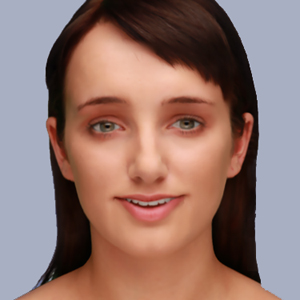How the Cleverbot Computer Chats Like a Human

Last week, an artificial intelligence computer named Cleverbot stunned the world with a stellar performance on the Turing Test — an IQ test of sorts for "chatbots," or conversational robots. Cleverbot, it seems, can carry on a conversation as well as any human can.
In the Turing Test — conceived by British computer scientist Alan Turing in the 1950s — chatbots engage in typed conversations with humans, and try to fool them into thinking they're humans, too. (As a control, some users unknowingly chat with humans pretending to be chatbots.) At a recent Turing competition, Cleverbot fooled 59 percent of its human interlocutors into thinking it was itself a human. Analysts have argued that, because the chatbot's success rate was better than chance, the computer passed.
So what magnificent algorithm lies in the gearbox of this brilliant machine, which can seem more human than not? How have its programmers equipped it with so much conversational, contextual and factual knowledge?
The answer is very simple: crowdsourcing. As the chatbot's designer, Rollo Carpenter, put it in a video explainer produced by PopSci.com, "You can call it a conversational Wikipedia if you like."
Since coming online in 1997, Cleverbot has engaged in about 65 million conversations with Internet users around the world, who chat with it for fun via the Cleverbot website. Like a human learning appropriate behavior by studying the actions of members of his or her social group, Cleverbot "learns" from these conversations. It stores them all in a huge database, and in every future conversation, its responses to questions and comments mimic past human responses to those same questions and comments.
If, for example, you were to ask Cleverbot, "How are you?" it will look back to the many times it has asked or been asked that question to retrieve a fitting response. And, because it's pulling up an answer that a human has typed, the response will sound mostly human (at least in theory).
The key to Cleverbot's success is that it doesn't respond solely on the basis of the last thing typed, but keeps track of words and phrases that have come up in the conversation already. As Carpenter explained, "It looks back to the whole conversation and says, there are maybe tens of thousands of people who have maybe responded to 'how are you?' in the past; which of those tens of thousands of responses is most suitable to use this time?" [How Do Calculators Calculate?]
Sign up for the Live Science daily newsletter now
Get the world’s most fascinating discoveries delivered straight to your inbox.
The online version of Cleverbot searches its database just three times before producing a response, while the more powerful version used in Turing competitions runs 42 database searches. "It's quite a few times superior to the online Cleverbot," Carpenter told the New Scientist.
The genius behind Carpenter's technology is that he simply programmed ground rules that allowed Cleverbot to grow smarter and smarter on its own, like a maturing human. We asked Cleverbot for its take on how this happens.
LLM: How do you get smarter? Cleverbot: I don't really believe one can become "smarter." One can become more knowledgeable, but not more intelligent.
Oh, the wisdom of the masses.
This article was provided by Life's Little Mysteries, a sister site to LiveScience. Follow us on Twitter @llmysteries, then join us on Facebook. Follow Natalie Wolchover on Twitter @nattyover.
Natalie Wolchover was a staff writer for Live Science from 2010 to 2012 and is currently a senior physics writer and editor for Quanta Magazine. She holds a bachelor's degree in physics from Tufts University and has studied physics at the University of California, Berkeley. Along with the staff of Quanta, Wolchover won the 2022 Pulitzer Prize for explanatory writing for her work on the building of the James Webb Space Telescope. Her work has also appeared in the The Best American Science and Nature Writing and The Best Writing on Mathematics, Nature, The New Yorker and Popular Science. She was the 2016 winner of the Evert Clark/Seth Payne Award, an annual prize for young science journalists, as well as the winner of the 2017 Science Communication Award for the American Institute of Physics.











